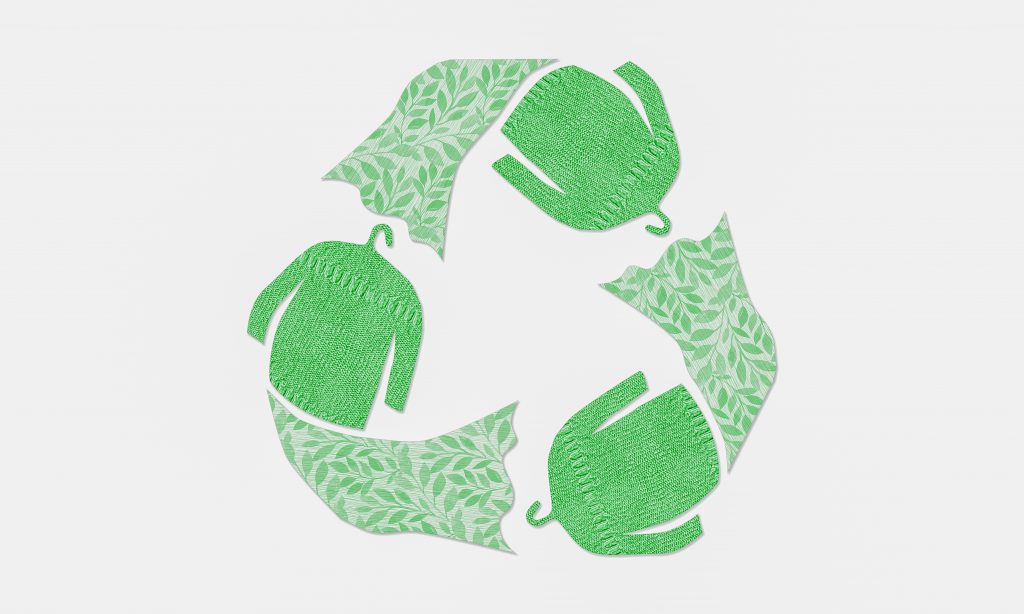Uncover Cape Town Sustainable Fashion Boutiques and Brands
Wiki Article
Stay Ahead of the Curve by Checking Out Innovative Fashion Fads
In a sector as vibrant as style, remaining in advance entails greater than simply adhering to current fads-- it requires an expedition of advancement. Smart textiles, as an example, are transforming garments right into useful work of arts, while 3D printing is changing style processes with its customizable, waste-reducing capacities. As sustainability ends up being a foundation, technologies like environmentally friendly products and round style practices are reshaping environmental duty - Cape Town Sustainable Fashion. Moreover, the merging of modern technology and fashion heralds a brand-new era of customer engagement. Just how, after that, can these emerging patterns redefine the future of style, and what ramifications do they hold for brand names seeking to prosper in this evolving landscape?
Accepting Smart Textiles
Recently, the apparel industry has experienced a transformative change with the integration of wise fabrics, an innovative advancement that mixes innovation with material. This evolution stands for not just a fusion of aesthetics and performance however likewise a significant jump in the direction of sustainability and personalization in vogue. Smart fabrics, also called e-textiles, embed sophisticated electronics such as sensing units and conductive strings within the material, allowing garments to interact with the user or the environment.These fabrics are designed to check physiological specifications, such as heart price or body temperature, giving real-time health and wellness analytics. Beyond wellness applications, wise textiles are also being utilized for adaptive apparel, which can change color or pattern in response to ecological stimuli, hence using a dynamic style experience.
Additionally, the advancement of energy-harvesting fabrics that generate power from motion or sunshine is leading the method for self-sufficient wearable modern technology. This technology is interesting environmentally mindful consumers and developers aiming to decrease the environmental footprint of fashion. As r & d in this area advance, clever fabrics are expected to become significantly widespread, reshaping the landscape of modern style with their multifunctional capacities.
The Surge of 3D Printing
Transforming the manufacturing landscape, 3D printing has actually become a game-changer in the garment industry. This advanced modern technology has allowed developers to push the borders of creativity, creating intricate and tailored garments that were previously unbelievable. By leveraging digital style and additive production, 3D printing helps with the creation of complex geometries and patterns, allowing designers to experiment with brand-new structures and structures.A remarkable advantage of 3D printing in vogue is its capability to generate on-demand, reducing waste and lowering inventory requirements. This efficiency not only maximizes manufacturing processes yet additionally permits quick prototyping, enabling developers to bring their visions to life in a much shorter timeframe. In addition, 3D printing supports customization somewhat unequaled by typical techniques, supplying personalized fits and distinct layouts tailored to private consumer choices.
The rise of 3D printing has actually additionally democratized style, making it easily accessible to emerging developers who can now make premium pieces without substantial monetary investment in traditional manufacturing facilities. As innovation proceeds to advancement, the garment industry is poised to harness the full possibility of 3D printing, exploring brand-new materials and strategies that will most certainly redefine exactly how fashion is conceived and produced.
Sustainable Style Technologies
As the garment industry comes to grips with the pressing need for environmental duty, lasting fashion innovations have actually emerged at the center of transformative adjustment. The expanding understanding of ecological impact has sustained a shift towards more eco-conscious techniques and materials. Brand names and designers are now prioritizing sustainability, incorporating methods that reduce waste and minimize carbon impacts.One substantial development is the increase of round style, which highlights recycling and upcycling to prolong the lifecycle of garments. This strategy not only minimizes waste however likewise motivates consumers to adopt a much more mindful method to apparel intake. Additionally, the use of sustainable products, such as organic cotton, hemp, and recycled polyester, has obtained grip. These materials require much less water and power throughout manufacturing, considerably minimizing environmental effect.
One more development lies in the fostering of cutting-edge dyeing techniques that use natural dyes or waterless procedures, consequently lowering the huge quantities of water and chemicals generally made use of in textile dyeing. In addition, advancements in biotechnology have actually brought about the development of lab-grown natural leather and fabrics, supplying cruelty-free and eco friendly alternatives to traditional materials. Via these pioneering initiatives, the fashion industry is making significant strides towards a more sustainable future.

Tech-Integrated Clothing
Tech-integrated garments stands for an innovative fusion of style and modern technology, improving how people interact with their clothes. This innovative domain name is marked by the addition of wise textiles and ingrained digital components, enhancing both performance and aesthetic allure. From fitness trackers embedded in sportswear to warmed jackets controlled by means of smart device apps, tech-integrated garments uses consumers unmatched ease and versatility.Pioneering brand names are driving this pattern, concentrating on producing garments that reply to ecological stimuli or individual commands. For example, some garments can transform shade or pattern in action to temperature changes, while find here others incorporate biometric sensing units to keep an eye on health and wellness metrics like heart rate or anxiety levels. The seamless assimilation of modern technology right into textiles likewise reaches environmental sustainability, with efforts to create self-cleaning materials or garments that adapt to weather conditions, thus minimizing the demand for multiple layers.
In addition, the advent of wearable innovation is not just restricted to clothes but encompasses accessories like watches and glasses, additional broadening the range of tech-integrated fashion. As the market proceeds to introduce, the capacity for modification and customization in clothing see page expands, supplying customers unique, tech-enhanced fashion experiences that provide to their private demands and preferences.
Future of Virtual Fashion
In recent years, the future of digital style has actually arised as a transformative pressure within the market, leveraging innovations in electronic technology to redefine exactly how fashion is created, experienced, and consumed. By incorporating increased fact (AR), online truth (VR), and 3D design tools, designers can currently craft interactive and immersive experiences that go beyond conventional fashion borders. Virtual style enables the production of garments that exist solely in electronic settings, supplying countless opportunities for development without the limitations of physical manufacturing.This electronic shift not only presents chances for innovative expression yet also addresses sustainability concerns fundamental in typical fashion practices. Cape Town Sustainable Fashion. By eliminating the demand for physical resources, virtual style reduces waste and decreases carbon impacts. Furthermore, the surge of digital fashion lines up with the boosting consumer demand for customized and distinct experiences, as digital garments can be personalized and tailored to specific choices with simplicity

Final Thought
The fashion business's future lies in the combination of ingenious modern technologies and lasting methods - Cape Town Sustainable Fashion. Smart textiles and tech-integrated clothing are boosting capability, while 3D printing supplies opportunities for personalization and dig this waste decrease. Lasting style, via environmentally friendly products and circular approaches, demonstrates a commitment to ecological stewardship. Moreover, virtual fashion is poised to redefine customer communications. Adapting to these fads is crucial for brand names seeking to continue to be pertinent and affordable in this swiftly developing landscape.In recent years, the fashion market has observed a transformative shift with the combination of clever fabrics, a sophisticated development that blends technology with fabric.As the style sector grapples with the pressing need for environmental responsibility, lasting style technologies have actually emerged at the center of transformative modification.In current years, the future of online fashion has actually emerged as a transformative pressure within the market, leveraging innovations in digital technology to redefine exactly how style is produced, experienced, and taken in. The surge of virtual style aligns with the raising customer need for tailored and unique experiences, as virtual garments can be personalized and customized to individual choices with simplicity.
The style market's future lies in the combination of lasting practices and innovative innovations.
Report this wiki page